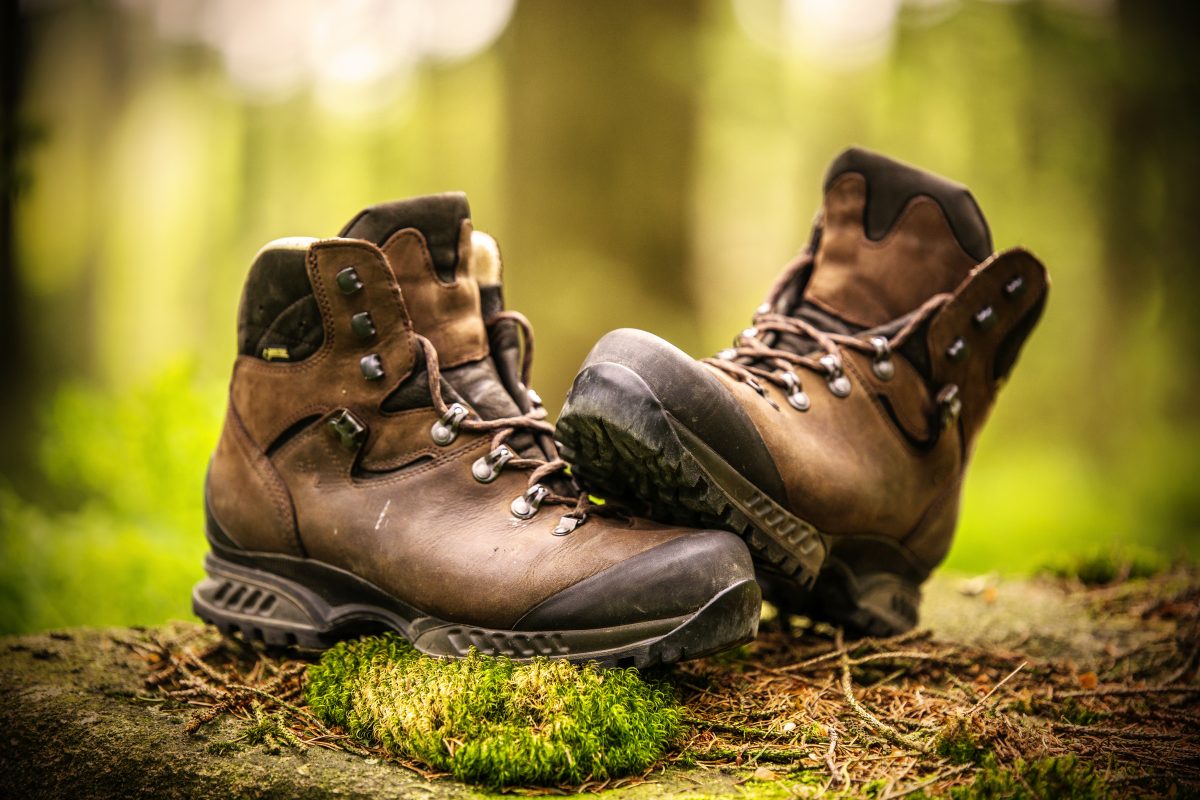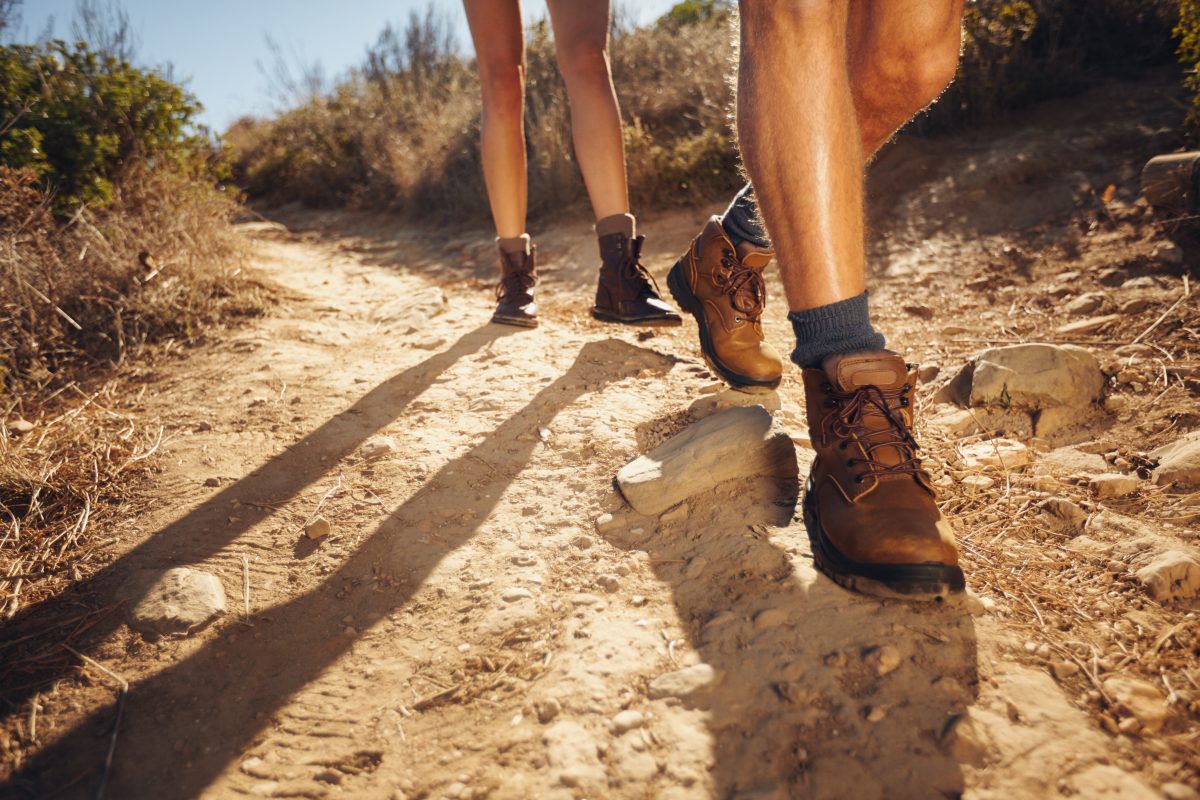
Anyone who has set off on a hike with just an ordinary pair of sneakers instead of hiking boots will know that hiking boots are vital if you’re really planning to do a long hike. But what do you need to bear in mind when you’re buying them? pjuractive has put together a few important tips on how you, too, can find the perfect hiking shoes.
What to think about before buying hiking boots
If you’re buying hiking shoes for the first time, you should seek expert advice. A specialist store is a good place to go for this. If you already have some experience and know what to look for when you’re buying hiking boots, you can also take a look online to find the right pair. But before you buy, you should be able to answer the following questions:
- Where do I want to do most of my hiking?
- What is the climate like in the region(s) where I want to go hiking?
- Will I just be doing day hikes, or am I planning to go on hikes lasting several days?
- Will I be travelling with lots of bags that I have to carry?
- What is the difficulty level of the hikes I want to go on?
Experts in a specialist store will want to know these things to find the perfect hiking boots for you. If you plan to wear hiking socks you should also take these with you when you’re buying hiking boots, along with insoles, should you need any. Only then can the hiking boots be accurately adjusted to meet your requirements. For hiking shoes such as these, experts recommend buying a pair a half or full size bigger than you normally wear. This leaves space for hiking socks without the shoes becoming too small.
Hiking boots – what to look for
Aside from the questions above, you should also pay attention to the bootleg, the material, the lacing, the sole and of course how it fits your foot. When it comes to these different elements, keep the following points in mind:
The bootleg: This is where the main difference between a pair of outdoor boots and ordinary sneakers lies. The bootleg stabilizes the foot and ankle as you hike. So there’s an important rule of thumb to follow: The more difficult the terrain, the higher the bootleg should be on your hiking shoes. That way, not only are your ankles given the support they need but they’re also protected from the undergrowth and from dirt and moisture.
The lacing: The lacing shouldn’t play such a big role when you’re buying your boots, since all hiking boots have laces that can be used to fasten them. The only important thing is to make sure you lace your boots properly when you’re going on a long hike. Lace them tightly toward the front of the boot. They can then afford to be a little looser toward the top. Just right for your boots to give you firm support.
The material: You should pay particularly close attention to this when buying your boots. Different materials are recommended depending on where you plan to hike. If you’re likely to be hiking in warmer climates, it’s important to make sure the material of your boots can absorb sweat effectively. Leather insoles lend themselves to this. If you prefer to hike in regions where conditions are cool and damp, however, it’s better to opt for synthetic boots with a waterproof membrane. These will give your feet reliable protection against the cold and damp. If you’re unsure what conditions you are likely to encounter on your hike, or if it may well be that both the weather and the terrain will vary, then you should go for leather shoes. These will usually cope with changing temperatures and a variety of different terrains without any problems.
The sole: The nature of your hike is a crucial factor when it comes to choosing the soles, too. If you’re going to be hiking along hard-surfaced paths, your soles can be relatively thin. But if you’re going to be tackling mountain terrain or open countryside without following signed hiking paths, your soles need to have good cushioning and a rather deeper profile. That’s the only way to make you sure have the footing you need. You should always ensure you have a non-slip sole, however.
The fit on your foot: When trying on hiking shoes, it’s particularly important to be aware of your heel, your midfoot and also your toes feel in the boots. Your heel and midfoot should fit perfectly in the boot, with barely any room for movement. If the boots don’t fit right around these points, you’ll end up with blisters faster than you think. Your toes are different. By contrast, they should have plenty of space and shouldn’t be in contact with anything.

Beside these points that you should keep in mind, the following tips can also help you find the right hiking boots with the perfect fit:
- Go for a quick walk in your hiking boots. This can quickly tell you if walking in them feels good.
- If you take the insole out of the boot and stand on it with your foot, you will be able to see quite clearly whether or not the boot will fit you well. The back of your heel should be a perfect fit against the insole. Your toes, on the other hand, should have about a centimeter’s room to spare.
Following these tips should help you find the right hiking boots for your next or maybe even your first hike. Beside hiking boots, however, a hiking rucksack is also essential before you set off on your hike. That’s why our next article reveals the secrets of what to look out for when buying a hiking rucksack.